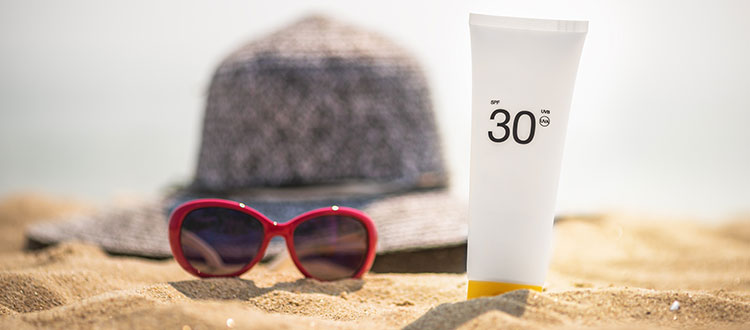Toxic Chemicals or UV Rays? Thankfully, We Have Safer Options
 |
| Jane Sheffer WVE Intern |
Summer is almost here, and that means longer days, warmer weather, and abundant sunshine. We all know that excessive sun exposure can be dangerous, but did you know that the product you use to protect yourself from UV rays – sunscreen – may also damage your health? Mounting evidence points to the health and environmental hazards of oxybenzone, the active ingredient in thousands of popular sunscreen products.
Hawaii is taking big steps toward a solution to this problem. On May 1, 2018, Hawaii lawmakers passed a bill that would prohibit the sale of sunscreens containing oxybenzone due to its harmful effects on coral. Oxybenzone acts as a hormone disruptor in coral larvae, leading to damaged, bleached coral reefs. Only a small drop of oxybenzone is enough to damage delicate corals, yet about 14,000 tons of sunscreen end up in coral reefs each year. This is detrimental not only to coral – studies show that oxybenzone can also disrupt the development of fish, other wildlife, and humans.
It’s not too surprising that a chemical that is damaging to our environment may also be damaging to our health. Laboratory studies indicate that oxybenzone may affect human hormone levels, which raises important questions about sunscreen’s unintended impacts on human health. Studies suggest a link between oxybenzone and poorer reproductive success in men, and female exposure to oxybenzone has been linked to increased risk of a painful reproductive condition called endometriosis.
How has a toxic chemical become a staple ingredient in a product meant to protect us? Unfortunately, like many products on the shelves, sunscreens are underregulated. While we work to prevent toxic ingredients from ending up in our products in the first place, there are steps you can take now to protect yourself from the sun, without jeopardizing your health!
Alternatives to sunscreen containing oxybenzone do exist. In fact, sunscreen products containing safer active ingredients, such as zinc, titanium oxide, and avobenzone are growing in popularity and availability. It’s time to follow Hawaii’s lead by protecting the health of the environment and our bodies by seeking alternatives to toxic chemical sunscreens, no matter where you live!
Here are some ways to stay healthy in the sun this summer:
- Cover up! Wear a hat, long sleeves, pants, or long skirts to protect your skin
- Find or create shade where you work and play
- Opt to stay indoors during the midday sun when rays are the strongest
- When selecting sunscreen, do so carefully! Here’s how:
- Look for sunscreens that contain active ingredients like zinc, titanium oxide, and avobenzone
- Avoid sunscreens that contain oxybenzone, Vitamin A (retinyl palmitate), or added insect repellent
- Check out The Environmental Working Group’s Sunscreen Guide to find some safer brands of sunscreens
- Avoid sunscreens that come as a spray or powder – it’s likely you will end up inhaling the product! Lotions and creams are a safer bet.
Want to do more?
- Write a letter to the editor about this issue
- If your favorite sunscreen contains oxybenzone, call the customer hotline number on the label and urge them to use safer ingredients
- Share this post on social media to raise awareness






